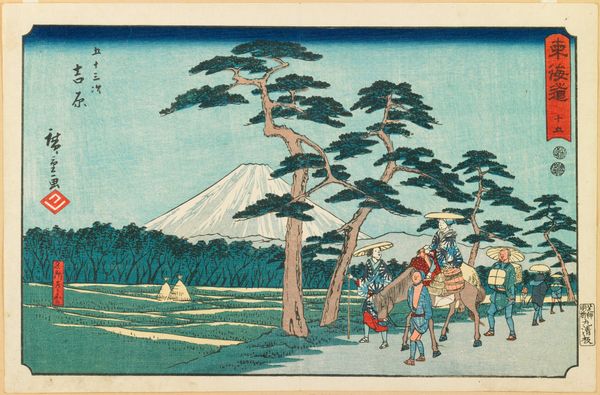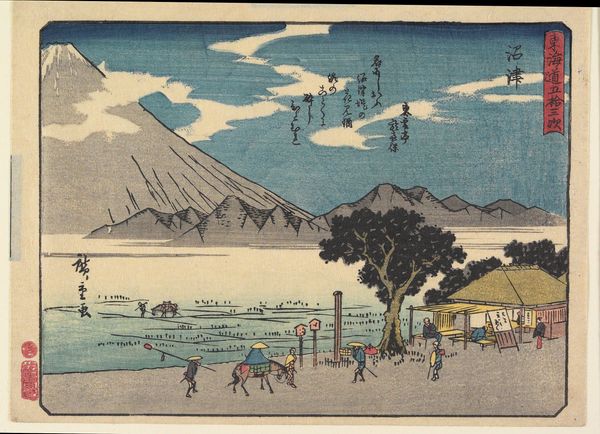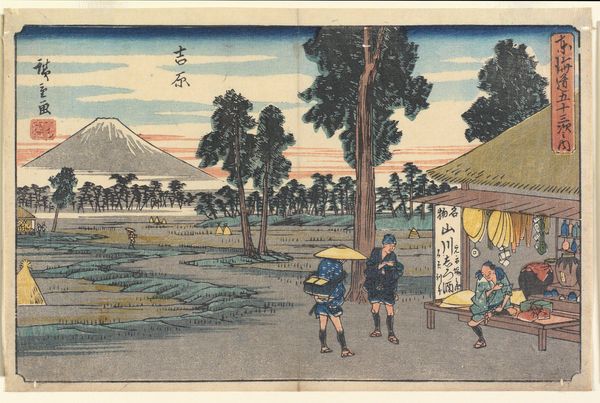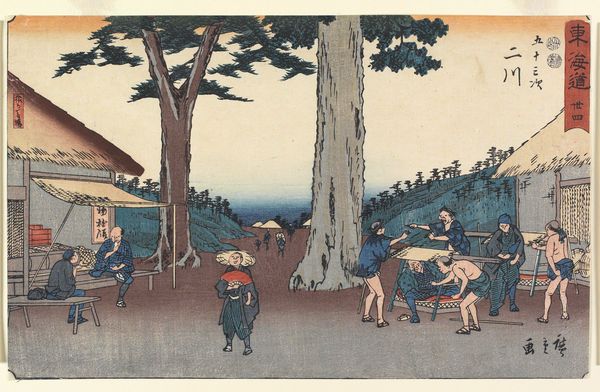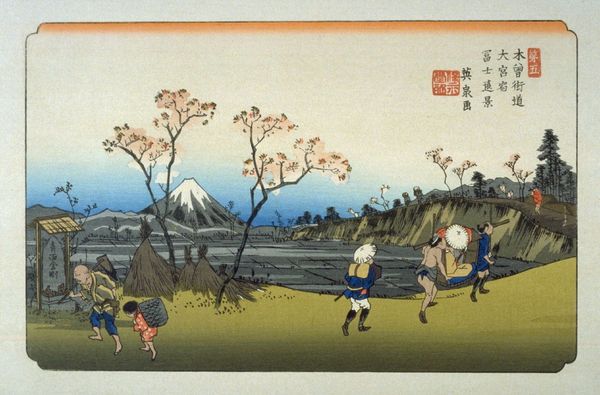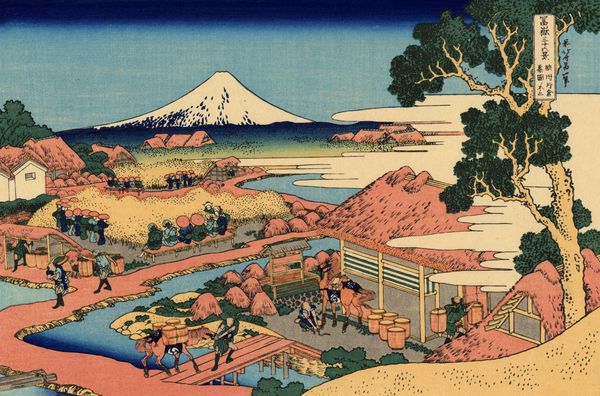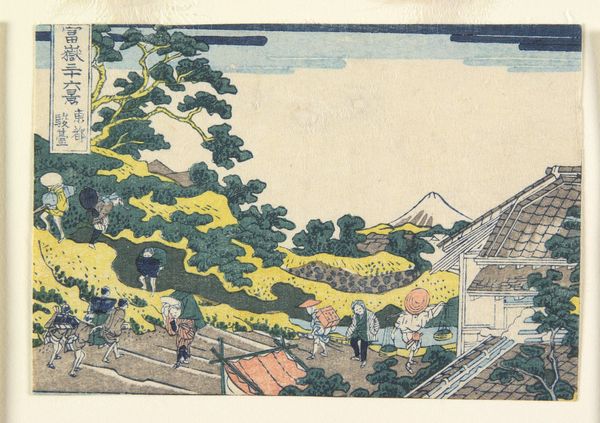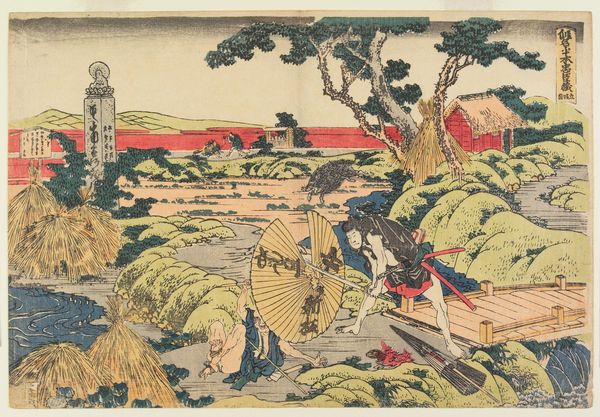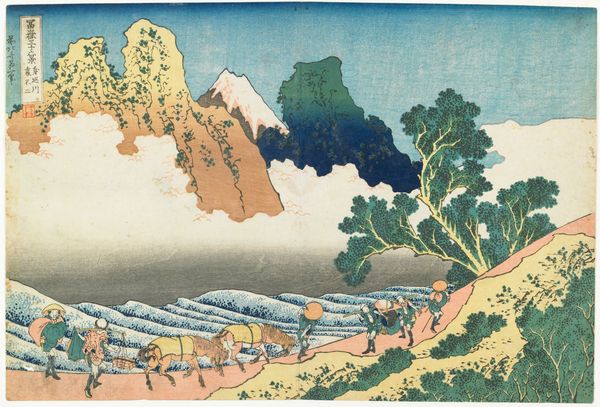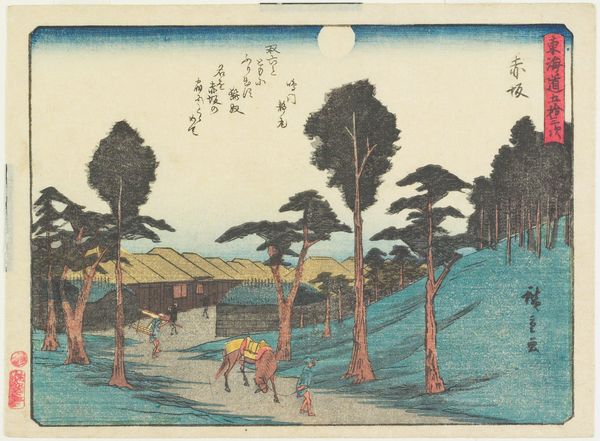
print, paper, ink, color-on-paper, woodblock-print, woodcut
#
water colours
# print
#
asian-art
#
landscape
#
ukiyo-e
#
japan
#
paper
#
ink
#
color-on-paper
#
coloured pencil
#
woodblock-print
#
woodcut
#
naive art
#
mixed media
#
watercolor
Dimensions: 3 3/16 × 4 5/8 in. (8.1 × 11.7 cm) (image, sheet, yatsugiriban)
Copyright: Public Domain
Curator: Here we have "Hodogaya on the Tōkaidō" a woodblock print crafted between 1834 and 1837, attributed to Hokumyō. It's currently housed here at the Minneapolis Institute of Art. Editor: Oh, look at that – a landscape caught in a gentle daydream! There’s a tranquil feeling in this scene. It’s like watching a memory unfold, soft around the edges. Curator: Absolutely. Ukiyo-e prints like this one often functioned as a cultural memory bank. This piece captures a specific locale along the Tōkaidō road, which held significant symbolic value as a key travel route during the Edo period. Think of it as the interstate of its time. Editor: The colours are just lovely—the blues in the sky melting down through those skinny pines like watercolour on silk, making Mount Fuji look as if it were a daydream floating in the distance. Who wouldn't stop and take in the view? It almost feels… nostalgic. Curator: That wistful sensation might stem from the enduring significance of Mount Fuji as a potent emblem of Japanese identity and permanence amidst change. These kinds of artworks offered a collective reflection of Japanese cultural pride, showcasing scenic spots that resonated deeply with the nation's spirit. Editor: Well, it works. It certainly does carry cultural weight, more like atmosphere itself! Hokumyō uses that mountain and the procession to symbolize journey as change, transition, even growth! What do you suppose a traveler felt looking out across this exact view on his way? Curator: The imagery taps into a kind of collective cultural subconscious. These prints weren't merely records but reminders—a touchstone, a way to situate oneself within the continuous narrative of Japanese heritage. Editor: "Hodogaya on the Tōkaidō" seems to say we are both wanderers and keepers of home simultaneously. Thanks to these kinds of historical cultural icons we still have something real we can see and feel. Curator: Precisely. These artistic echoes from the past enable us to contemplate not only where we've been but also where we are headed, always bearing those shared imprints within us.
Comments
No comments
Be the first to comment and join the conversation on the ultimate creative platform.
